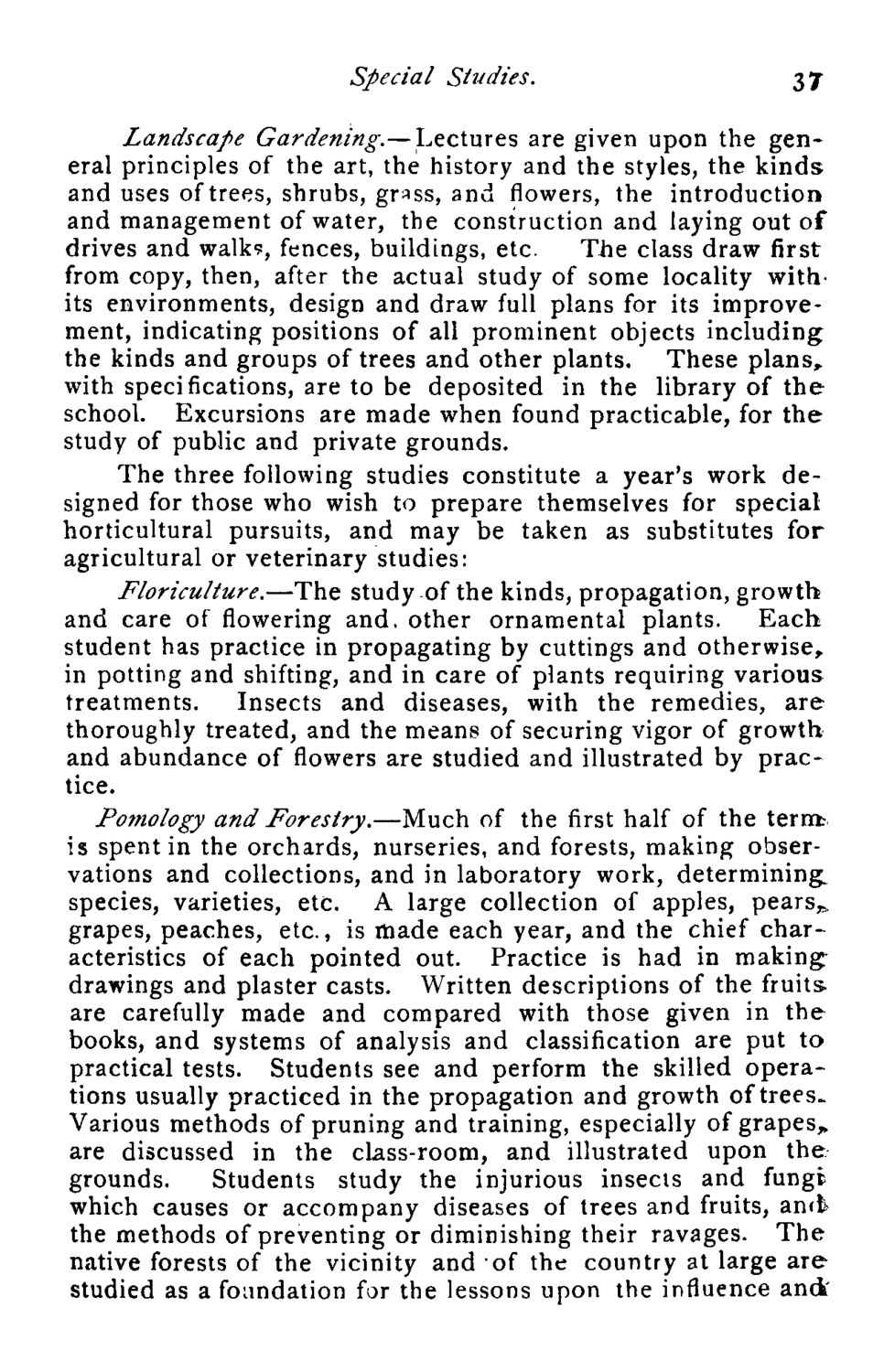| |
| |
Caption: Course Catalog - 1884-1885
This is a reduced-resolution page image for fast online browsing.

EXTRACTED TEXT FROM PAGE:
Special Studies. 37 Landscape Gardening.— Lectures are given upon the general principles of the art, the history and the styles, the kinds and uses of trees, shrubs, grass, and flowers, the introduction and management of water, the construction and laying out of drives and walk?, fences, buildings, etc. The class draw first from copy, then, after the actual study of some locality withits environments, design and draw full plans for its improvement, indicating positions of all prominent objects including: the kinds and groups of trees and other plants. These plans, with specifications, are to be deposited in the library of the school. Excursions are made when found practicable, for the study of public and private grounds. The three following studies constitute a year's work designed for those who wish to prepare themselves for special horticultural pursuits, and may be taken as substitutes for agricultural or veterinary studies: Floriculture.—The study of the kinds, propagation, growth and care of flowering and. other ornamental plants. Each student has practice in propagating by cuttings and otherwise, in potting and shifting, and in care of plants requiring various treatments. Insects and diseases, with the remedies, are thoroughly treated, and the means of securing vigor of growth and abundance of flowers are studied and illustrated by practice. Pomology and Forestry.—Much of the first half of the term: is spent in the orchards, nurseries, and forests, making observations and collections, and in laboratory work, determining, species, varieties, etc. A large collection of apples, pears^ grapes, peaches, etc., is made each year, and the chief characteristics of each pointed out. Practice is had in makingr drawings and plaster casts. Written descriptions of the fruitsare carefully made and compared with those given in the books, and systems of analysis and classification are put to practical tests. Students see and perform the skilled operations usually practiced in the propagation and growth of trees. Various methods of pruning and training, especially of grapes* are discussed in the class-room, and illustrated upon the grounds. Students study the injurious insects and fungi which causes or accompany diseases of trees and fruits, andthe methods of preventing or diminishing their ravages. The native forests of the vicinity and of the country at large are studied as a foundation for the lessons upon the influence and'
| |